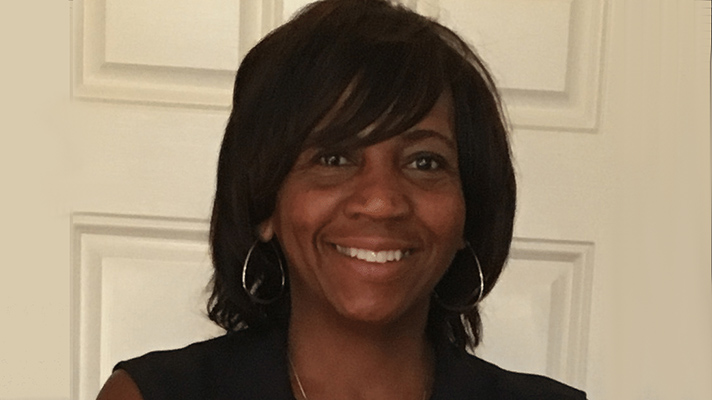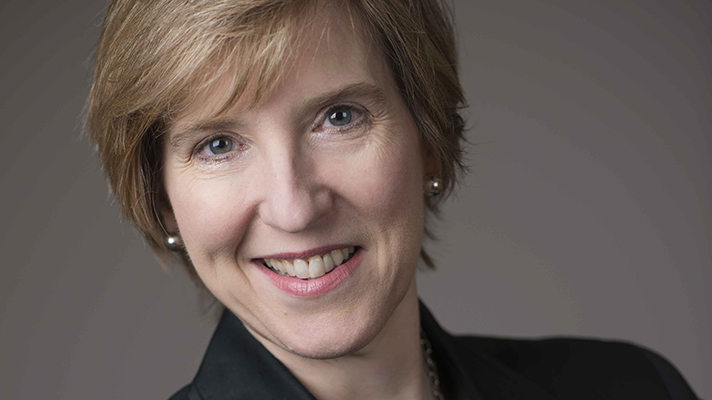Women In Health IT
Commentary: Time to look beyond EHRs to Direct messaging, natural language processing, rules engine…
While healthcare entities are waiting for EHR vendors to make data more interoperable, a raft of emerging technologies are enabling information exchange in ways that work effectively today, according to Lisa Moon, a partner with the Timmaron Group.
Accountable Care
Eight in 10 U.S. patients would welcome some aspect of virtual healthcare, but only 1 in 5 providers is meeting that need.
This podcast episode, part two of this three-part series, we gain an insider’s view on the give-and-take between policy and public health with Nedra Garrett, Senior Advisor for Informatics at Centers for Disease Control and Prevention.
I recently had an opportunity to advise an IT department on the team’s overall lean initiative. While no two organizations have the same lean journey, there are common challenges. Visual management and huddle components can give a lean management system a boost. Here are some of the common challenges you can expect to encounter and tips for success:
“Perfect is the enemy of good” – You must be willing to experiment and get messy. Visual boards take many shapes and forms. Do they help you focus on the right work and metrics as a team? It’s less important that they look pretty to the outside observer.
Standard framework with room for variation – Even if there is a standard for what all huddle boards in your organization should look like and include, there must still be room for variation by unit or team. What’s important to one team may not be important to another. If you’re ready to get started and wonder if there will be an organization standard at some point, don’t wait for it. Just get going and adapt later if a standard appears.
Find metrics that are meaningful – Ask yourself a few questions. What problems are you trying to solve? What do you need to measure to track progress and show improvement? Shining a bright light on a specific metric may cause some angst but if it is one that needs to be measured to improve, shine away.
You are there to solve problems – Be sure your huddles are not a place where people feel beat up. Create a culture of improvement that is blame-free, transparent, metric driven and focused on doing better for your employees and your customers. Be willing to tell the “ugly story” about something that doesn’t work as well as it should. Figure out how to improve it, implement the changes, and measure the results.
Celebrate your wins – carve out a place on your board where you can highlight successes and celebrate what you’ve done as a team.
Be creative and have some fun with it – I’ve seen huddle boards that take on a sports team and car racing themes. The potential for team ownership is that much greater when people can have some fun with it.
If you’ve got a huddle board story or picture to share, I’d love to hear about it.
This post was first published on Sue Schade's Health IT Connect blog.
SPONSORED
Carla Smith, executive vice president of HIMSS, will lead a discussion with the the inaugural recipients of the HIMSS’s Most Influential Women in Health IT Award. Topics include problem solving, innovation, mentorship, interoperability, care delivery. The webinar will be March 28.
Winner of a HIMSS Most Influential Women in Health IT Award dedicates the honor to all women in hea…
Shareefa Albulmonem, head of eServices, Office of the CIO at King Faisal Specialist Hospital and Research Center in Saudi Arabia, is one of seven women being honored by HIMSS with a Most Influential Women in Health IT Award.
The women will be recognized at a reception and awards dinner, both on February 20 at HIMSS17
Here, in her own words, is Shareefa Al Abulmonem’s reaction to learning she was among the seven winners:
I am not sure if it’s just me or does life have some amazing surreal moments …
After walking out of a meeting, I received a message in my inbox that stated something around my HIMSS Most Influential Women in Health IT Award nomination.
I never expected to win as there are many deserving women in healthcare and I thought I was just being informed of the nomination process. I passed the phone over to my boss who was standing next to me in the hospital. He read it and let out a loud cheer that made everyone in the hospital corridors stop and wonder what just happened. In his haste, he congratulated me for being shortlisted and said “inshallah we hope you win.”
The phone got passed to one of my employees and after reading it she told me, “Shareefa, you won!”
How could I win?! It’s probably a mistake so I checked for other emails from Carla Smith or HIMSS where they might be apologizing for the mix-up. Nothing. I called my husband and told him, I think I need to go shopping as I am experiencing one of those surreal moments. On the way home I read the email from Carla a couple of times and came to the conclusion, “Wow, I won!” That’s when all of the achievements that brought you to this point start replaying in your mind.
I would like to dedicate this award to all the women of healthcare in Saudi Arabia.
The transformations we are making together symbolize the importance we place on women’s health and the importance of a healthy nation.
It gives us an opportunity to be role models to the younger generation as to the changes we would like to happen. Alhamdulillah, the Zahra Breast Cancer Association has grown to become the regional face of women’s health, and I was just a member of an extraordinary team who shared the same vision. My career has been full of individuals who were mentors and guides for me throughout and I would like to thank them all.
Saudi Arabia is an evolving country and to be an active part of the country’s transformation is a blessing.
I believe technology drives majority of the advancements we are currently witnessing throughout the world, and the same applies in healthcare.
King Faisal Specialist Hospital & Research Center – KFSH&RC has given me the platform to leverage and implement technology for the betterment of health, patient and citizen care. T
The launch of SEHATY, KFSH&RC Patient Portal, and the praise it received opened numerous other opportunities to build on continuum of care and to be able to constantly engage the patient in the management of their health. There are endless possibilities of how technology can be utilized in the appropriate and various ways in healthcare.
This award has given me a boost on how much more effort lays ahead, so thank you for sharing this surreal moment with me, but I really need to get back to work!
Engage with your peers and take the next step to further your career while connecting with and empowering women in health IT while in Orlando for HIMSS17. Check out the education and networking taking place.
Access to healthcare is underpinned in large part on a health consumer’s access to information about available health care services, their location, price, and if the patient is very fortunate to glean, quality. As people take on more responsibility for managing their health care utilization and financing in America, their access to information that is easy-to-find, clear, comprehensive and current is critical to personal and public health outcomes.
But consumers are dissatisfied with the state of health care information in their lives, discovered through a survey supported by Robert Wood Johnson Foundation and Oliver Wyman, and conducted by the Altarum Institute. Results of this study were published in the report, Right Place, Right Time: Health Information and Vulnerable Populations.
Oliver Wyman featured these findings in a conversation held at the World Economic Forum in Davos week titled, Vulnerable Populations and the Great Health Divide.
The study’s top-line insight was that vulnerable US health citizens are health information-compromised. This group of people tends to be uninsured, Spanish-speaking, caregiving, and enrolled in Medicaid. The lack of health/care information access jeopardizes care access and quality, putting people at-risk for worse health outcomes, eventual higher costs, and greater burden of disease compared with people who enjoy health information access. Health consumers want financial transparency; simpler, direct language; mobile-friendly formats; and, respect. This is a lightbulb moment finding in the survey; see the Hot Points, below.
The study’s key findings were that:
Consumers demand cost information and mobile-friendly websites
Consumers seek improvements to information about cost of care, accessibility, and comparisons
Caregivers use the most health care information but struggle to find resources to help themselves
Uninsured people have greater difficulty accessing health care information
Spanish speaking people struggle with language barriers, and rely on friends and family to offer advice and remedies
Patients who feel disrespected by providers are less likely to trust health care information or follow medical advice.
For the poll, Altarum Institute interviewed 4,068 consumers via a mail and web survey, and conducted interviews and focus groups with 65 consumers. Research was fielded between June and August 2016.
Health Populi’s Hot Points: The role of respect in the relationship between patient-consumer and provider cannot be underestimated, based on the clinical evidence found in this study. Specifically: feeling disrespected was linked to medication non-adherence.
Thirty-two percent of people without health insurance feel disrespected, this study found. People who are sicker tend to feel less respected, as well as those with lower incomes.
The Rodney Dangerfield feeling of “can’t get respect” leads to health consumers being three times less likely to trust information provided by their doctors. Furthermore, patients who feel disrespected by providers are twice as likely to be non-adherent to medication regimens. For example, people with diabetes (PWD) who do not feel respected are one-third more likely to have poorly-controlled diabetes compared with PWDs who feel respect from their providers.
User-centered design is mandatory for the health information economy. Health information portals are poorly utilized because they lack good design informed by patients’ values, digital literacy, and life-flows. Empathy is part of this ethos. The report notes that, “Good patient-provider relationships are not just part of good bedside manner…positive patient-provider relationships should be considered a medical priority, and should be encouraged through training, education and, potentially, compensation changes.”
Throughout the health/care ecosystem, as we work to incorporate health in all policies and cultures of health, we must be mindful that empathy, caring, and respect are key ingredients in user-centered design. Check out the approach of Dignity Health’s #hellohumankindness as an example of branding and delivering on empathy in healthcare.
This post originally appeared on Health Populi.
I’ve written many posts on leadership. As we witness the peaceful transfer of power in the Office of the President, it seems fitting to reflect again on leadership and what we should expect of leaders.
When I think of critical leadership qualities at the executive level, I think of vision, integrity, presence, communication, and authenticity. If you look at position descriptions for executive level leaders in business, you will see all of these and more.
I’ve talked in the past about the core principles and values I share with my staff when starting a new leadership position. In that early period, I want my team to get to know me and to understand what’s important to me. I want them to hold me accountable for living these values every day in every situation. And I also expect everyone on my team to live them as we work together.
Here they are again but with a more generic description that can fit any leadership position:
Teamwork – the leader must set a tone in all their words and actions that people are expected to respect one another and work collaboratively toward common goals in the best interest of all.
Transparency – the leader must practice open, honest, and proactive communication and expect that from others.
Customer service – the leader must remember who they are ultimately serving and have that guide their decisions.
Accountability – the leader must be accountable, take ownership and deliver on their commitments.
Innovation – the leader must create an environment where people are encouraged to be creative and bold in their thinking.
Continuous improvement – the leader must encourage change and not allow the status quo to be the norm if it no longer works.
Results focus – the leader must focus on end results with appropriate respect for the rules and processes.
You should expect no less of your leaders. You should expect all this and far more.
This post was first published on Sue Schade's Health IT Connect blog.
Think about the little girls you know. Did they get even more dolls for holiday gifts? Or did they get toys and games that teach creative thinking and how to build things? Or did they maybe even get toys officiallylabeled in the STEM category?
Social norms start young. I recently played a match game with my two-year-old granddaughter. When we matched the truck picture, she took it over to her 6-month-old baby brother as though it was his domain! This granddaughter and her two-year-old girl cousin have a variety of developmental toys. But when it’s free play, they are often clutching one of their dolls, whether it’s Princess Sofia the First or the newest Disney Princess Elena of Avalor. At least these characters are both confident, strong and compassionate princesses!
My four-year-old granddaughter isn’t as attached to dolls these days. After a break, she is back in dance class, my birthday gift to her. I know she loves it. At Christmas, with her mother’s advice, I gave her 3 months of Koala Crate – a creative, educational activity box for 3-5 year olds. She loved the first box – making stuffed reptiles and learning about them.
You may be saying it’s all about exposing kids to a lot of different things. I agree. But it’s important to not fall into the gender norms when they are young.
Let’s fast forward from my three little granddaughters to some of the female leaders in our health IT industry.
The CHIME-HIMSS John E. Gall Jr CIO of the Year is Pam Arora, Senior Vice President and Chief Information Officer at Children’s Health System of Texas. I am delighted. Pam is a leader in our industry and deserves this honor.
I can’t help noting though that Pam is only the fifth woman to receive this award which began over 25 years ago.
I spoke on a HIMSS Women in Health IT webinar on Tuesday, January 17th titled “Yes we can, attracting the future leaders in STEM”. To prepare my talk, I asked Pam and the past female CIOs of the Year about how they got into IT and what advice they would now give their younger self. While there are many women health IT leaders, why not turn to these recognized and accomplished women for some advice?
They got into IT because of the encouragement of either a parent, a teacher, or a boss. These important influencers encouraged an early interest in math and helped them stay with it as they started working. For two of them, like myself, their first IT job was programming. And it was back in the day of punch cards and programming languages you’d not recognize today.
The advice to their younger selves and to young women going into IT and STEM fields today was to have a can-do, positive attitude and to find balance.
Stephanie Reel is the Chief Information Officer and Vice Provost for Information Technology for the Johns Hopkins University, and Vice President for Information Services for Johns Hopkins Medicine. A bigger and broader role than the average healthcare CIO. She advised: “Be happy; be proud; go home a bit earlier to enjoy time with family”. She is a strong advocate for building a healthy work environment. She went on to say “We need to be kinder and gentler, and we should never allow ourselves to be bullied, or made to feel inadequate.”
Pat Skarulis is the Vice President and CIO at Memorial Sloan-Kettering Cancer Center. Her advice is “Just do it. Take as much math and science as you can early in your academic career.” She also advised to not overlook the arts which are very important to your development and career.
Pam McNutt, Senior Vice President and Chief Information Officer, Methodist Health System, remembered the advice from her parents. “Don’t focus on the differences between men and women, just do your best and show value”. Her father told her she could do anything; the sky is the limit. Her mother taught her how to be a woman in what was a man’s world.
Per Pam Arora, it’s important to stretch and not be afraid of new challenges. “Don’t be afraid of work you have never done before. It’s a first for everyone at some point. Dare to be the first!”
I have great respect for all these women. We can all learn from them. The two leading professional organizations in our industry, HIMSS and CHIME, recognize the importance of developing women. I applaud the efforts they have launched under Carla Smith and Liz Johnson’s leadership respectively.
Resources:
HIMSS Women in Health IT
CHIME Eyes Programs to Improve Leadership Diversity
This post was first published on Sue Schade's Health IT Connect blog.









